Lone Star Shelter
As many as 373,000 from the Gulf Coast come to Texas, the Observer was there to capture a few of their stories
Lone Star Shelter
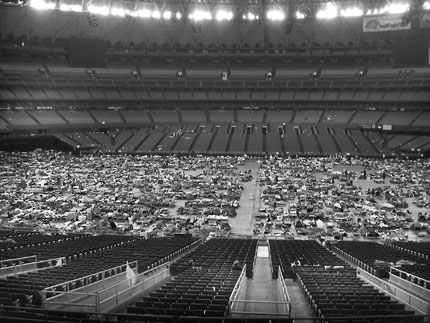
Only pictures can truly do justice to the scale of hurricane Katrina and its aftermath. The images are now indelible for all of us, from the satellite shots of the monster storm as it crashed into the Gulf Coast to the helicopters plucking people off rooftops. The storm on display stripped away spin, destroyed an American landmark city, and displaced upwards of a million people across three states.
A mass exodus fled from the Crescent City to Texas. They had survived the horrors of their submerged neighborhoods, the Superdome, and the convention center. Stumbling off buses in Texas exhausted, dazed, dirty, and hungry, they filed into massive shelters set up in aging sports complexes and other facilities throughout our state. Officials estimate that the Gulf Coast evacuees from Katrina who sought refuge in Texas numbered as high as 373,000. The mayors of Texas’ four largest cities handled the influx remarkably well—27,000 to the Houston Astrodome and Reliant Center, 17,000 to Dallas’ Reunion Arena and convention center, 13,000 to the San Antonio convention center, and 5,000 to the Austin convention center. An extraordinary outpouring of goodwill greeted the evacuees. While some will return home for the long reconstruction, others will likely settle in Texas. “The gumbo has spilled into the chili,” joked displaced New Orleans musician Cyril Neville at a concert in his new home of Austin.
As we often do in these pages, we look to documentary photographers, who manage to stop time and allow us to think as we gaze into the eyes of the members of this new American diaspora. These images were taken from September 3 through September 5 by Steve Satterwhite at the Reunion Arena and convention center in Dallas, Tom Kilty at the Houston Astrodome, and Alan Pogue and Vic Hinterlang at the Austin convention center. Their subjects range in age from 89 years old to 9 days old. Some of them were not only born and raised in New Orleans and the surrounding parishes, they had rarely—if ever—left their hometown. Others, like Brazilian native Lucy Wijngaard whose photograph appears on our cover, traveled thousands of miles to create new lives for themselves and their families along the Gulf Coast. The photographs that appear on these pages represent just a fraction of the fine images taken in Dallas, Houston, and Austin.—Editors.
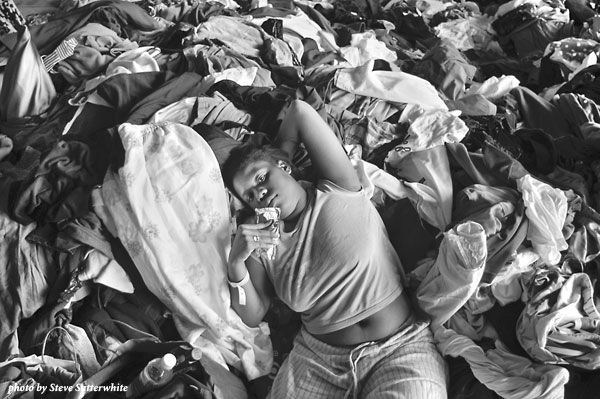

Tisha Davis works in the records room at the CC Community Correction Center in New Orleans. She brought her Uncle Charlie, 89, with her to the jail during the storm and its aftermath. They had to leave behind her daughter’s pet rabbit, Snuggles. “Every night we would measure how high the water would get. We had a New Orleans Police Department bus, and when the water got over the bus, we were like, `okay, we’re going to die’. Then the inmates started to get restless. The generators ran out. It was hot. The inmates started breaking the windows out. I don’t know how they did it but they got out of their cells.” Finally, the sheriff had the department of corrections come and transfer the prisoners out. A neighbor rescued a bedraggled Snuggles from the family’s apartment. “We’re going to name him Lucky Snuggles, that’s what he is.”
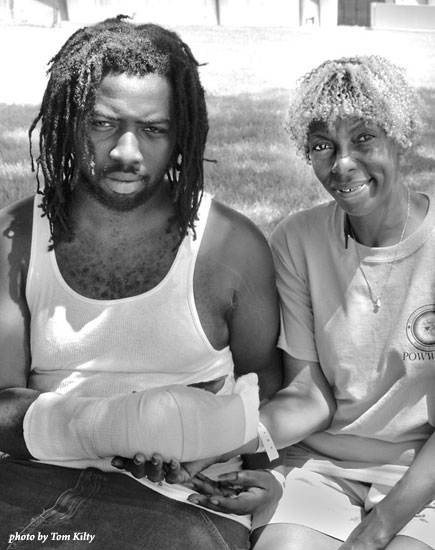
Joyce Coates was walking outside the Houston Astrodome when she spotted Mark Henderson, a 21-year-old cook from New Orleans. It was the first time that she had seen him since they were evacuated. “He’s a hero!” she cried, as she pointed to his bandaged right arm. “This is the arm that saved me. He saved my life, and my 13-month-old grandbaby and my 17-year-old son. This is the arm that saved me.” At breakneck speed and choking back sobs, Coates explained how she and her family were out in the street, waiting to be saved by an improvised rope and pulley system. “I don’t know where it came from, but all of a sudden the water started coming and it got higher and higher and higher. I’ve never been so scared in my life. He took his arm and smashed the glass so we could get inside some people’s house. I just want to thank him so much. I feel like I want to give him an award.”
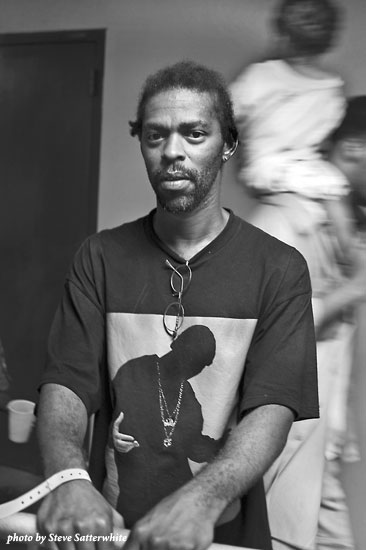
Lawrence Walker, a New Orleans native from the Ninth Ward protected his two young nieces and a son from the hell that was the Superdome. “I feel real safe here [in Dallas]. I ain’t got to worry about all the danger going on in New Orleans, with people snatching children, and raping them, and fighting and everything. They were finding children in the garbage cans and stuff. Yes, they tore that place up.”
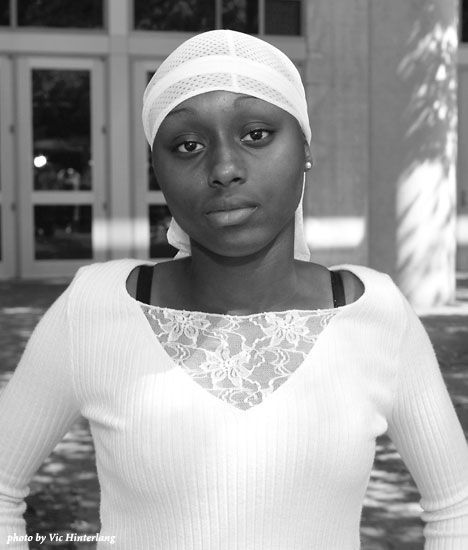
Precious Ringo, 16, was taken by boat to a point on I-10 from her home in New Orleans’ 7th Ward, then by helicopter to the airport where she waited about eight hours to board a plane to Austin. She arrived on Saturday, September 3, and was photographed at the Austin Convention Center on September 5.


